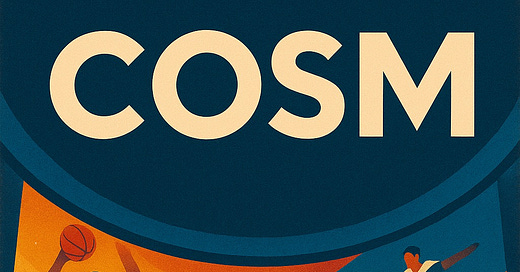Fandom in the Streaming Era: How Twitch, TikTok, and Twitter Are Changing Sports
Sports used to be simple: games aired on TV, fans tuned in, and highlights came later. Today, sports consumption is fragmented, immediate, and deeply personal. Platforms like Twitch, TikTok, Twitter, and YouTube have dismantled the old model, empowering fans to curate, comment on, and even co-create the sports experience in real time.
The result? Fandom is no longer passive. It’s interactive, algorithmic, and chaotic—and the leagues are scrambling to keep up.
The New Front Row Seat
Twitch has transformed how fans experience sports. Whether it’s live watch-alongs with streamers, esports tournaments, or athletes hosting their own gaming sessions, the platform blurs the line between athlete and audience. Fans aren’t just watching—they’re chatting, reacting, and influencing the conversation as it happens.
During the 2022 FIFA World Cup, unofficial Twitch streams sometimes rivaled traditional broadcasts in engagement. In the NBA, players like Josh Hart and Tyrese Haliburton regularly go live postgame to break down their own performances, pulling fans into the locker room experience.
TikTok’s Highlight Factory
TikTok is where sports moments go viral. From buzzer-beaters to trick shots to sideline dances, the app has become the new SportsCenter for Gen Z. And the algorithm does the work—serving up niche clips to hyper-specific audiences at a breakneck pace.
This changes how highlights are made. They’re shorter, punchier, and often remixed with music, memes, or fan commentary. Athletes now go viral not just for their play, but for their personality, fit, or post-game quote. The traditional highlight reel has been replaced by a loopable, shareable micro-moment.
Twitter as the Sports Bar
Twitter remains the real-time heart of sports discourse. Every major game becomes a global conversation. Fans, analysts, and players alike share takes, memes, and instant reactions. Hashtags trend. Debates explode.
But Twitter also shapes narratives. A viral clip or misquote can define a player’s perception. A trending injury report can move betting lines. And because so many journalists and insiders live on the platform, it’s where rumors start—and sometimes, where they’re settled.
The Rise of Fan-Centric Media
Barstool, Overtime, House of Highlights, and other digital-native outlets cater to a new kind of fan—one who values humor, authenticity, and speed over polish. These brands don’t just cover sports—they speak the fan’s language. They meme. They troll. They hype.
In many cases, they reach more young fans than ESPN. Leagues are taking notice. The NBA and NFL have partnered with these outlets for content distribution, while teams hire meme creators and TikTok editors as part of their media staff.
Athletes as Channels
Athletes no longer rely on networks to tell their stories. They have their own platforms—and their own followers. Whether it’s Draymond Green’s podcast, JuJu Smith-Schuster’s TikTok feed, or Serena Williams’ fashion content, today’s athlete is part creator, part brand.
This direct connection reshapes fan relationships. It builds trust. It creates community. And it gives athletes control—over their image, their message, and their monetization.
Monetization in the Attention Economy
Digital fandom isn’t just about engagement—it’s about revenue. Streamers make money through subscriptions and tips. Athletes land NIL deals based on their social metrics. Leagues are experimenting with pay-per-tweet highlights and exclusive behind-the-scenes content.
Even the definition of “watching” is changing. Fans might not sit through an entire game—but they’ll watch 30 clips, follow a live Twitter thread, and buy a hoodie from a viral moment. Attention is currency—and sports are learning how to spend it.
Challenges and Growing Pains
This new model isn’t without friction. Leagues struggle to control their content once it’s clipped and shared. Copyright issues pop up constantly. Older fans complain about “disrespect” for the game’s traditions.
And there’s risk in making everything a moment. When every play is content, athletes can feel pressure to entertain rather than compete. But for many, the benefits—visibility, control, opportunity—outweigh the costs.
Final Thoughts
Fandom in the streaming era is fast, fluid, and fan-shaped. The audience isn’t just watching sports—they’re steering them. And as the platforms evolve, so will the playbook.
The stadium isn’t the center anymore. The stream is. And in this new arena, every swipe, share, and scroll is part of the game.



